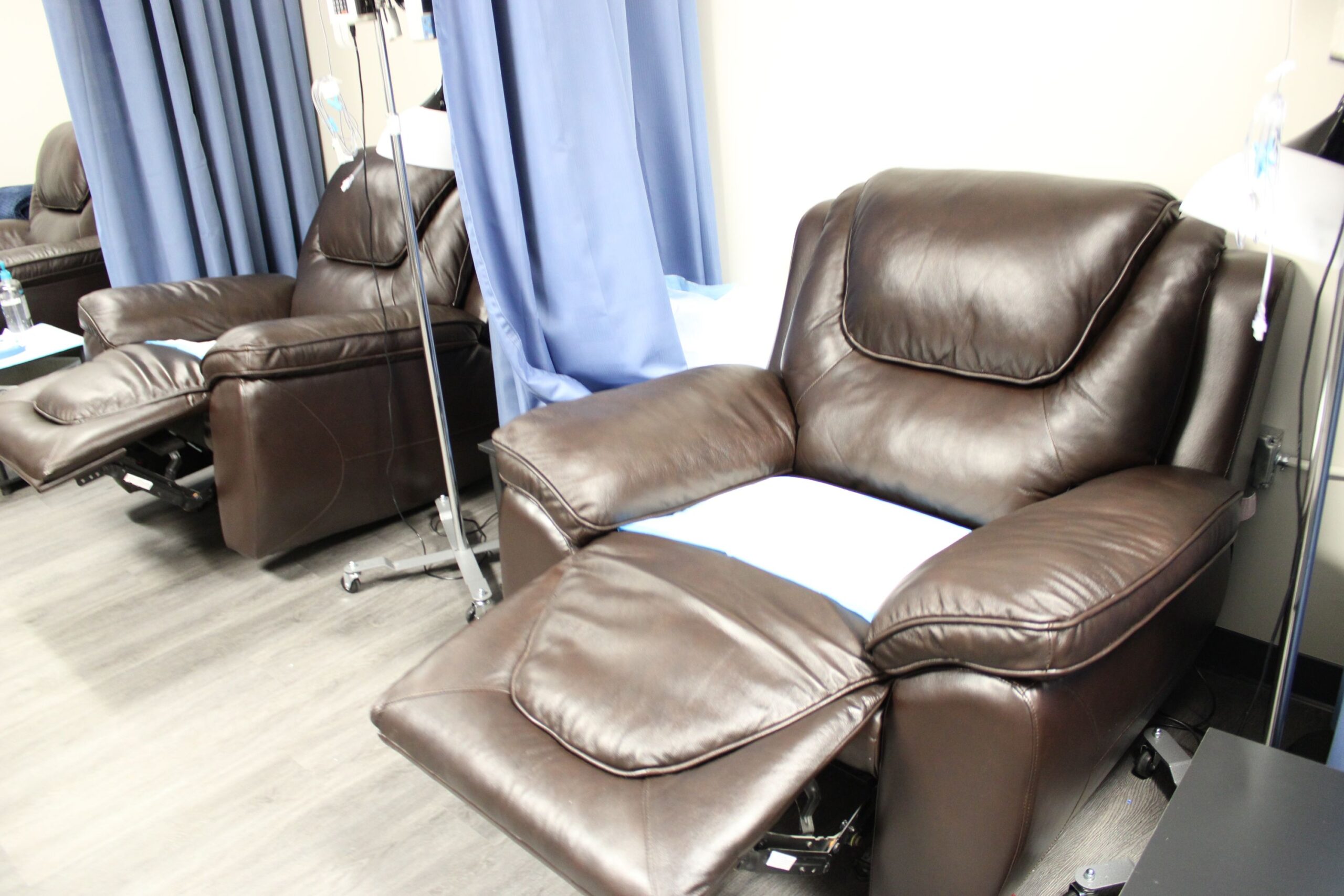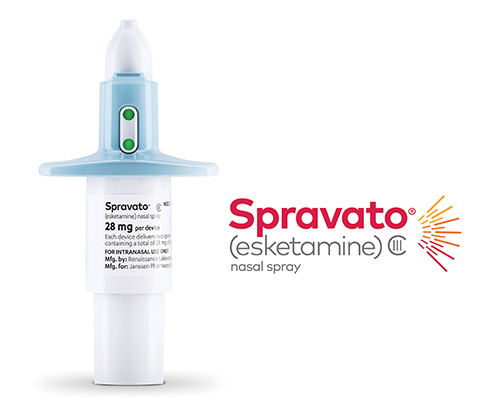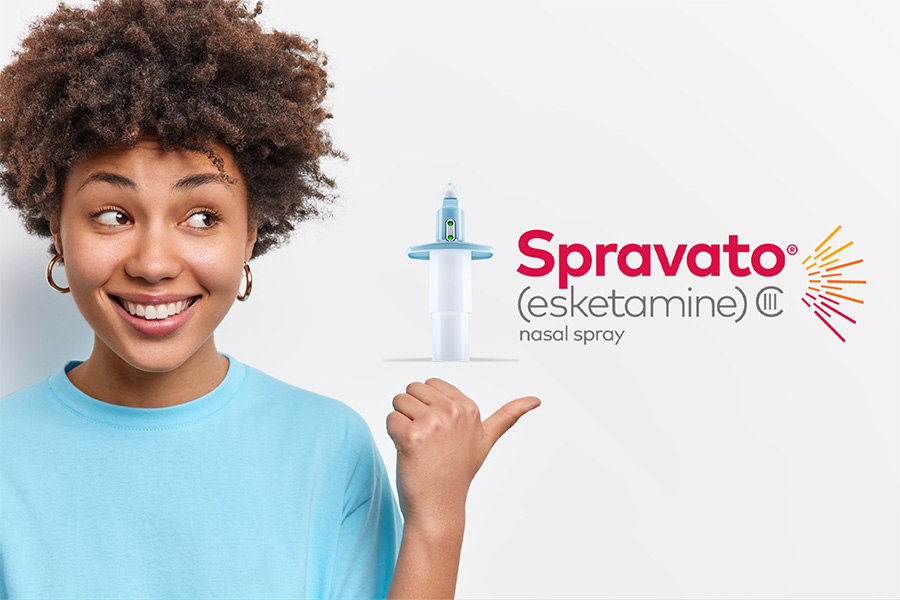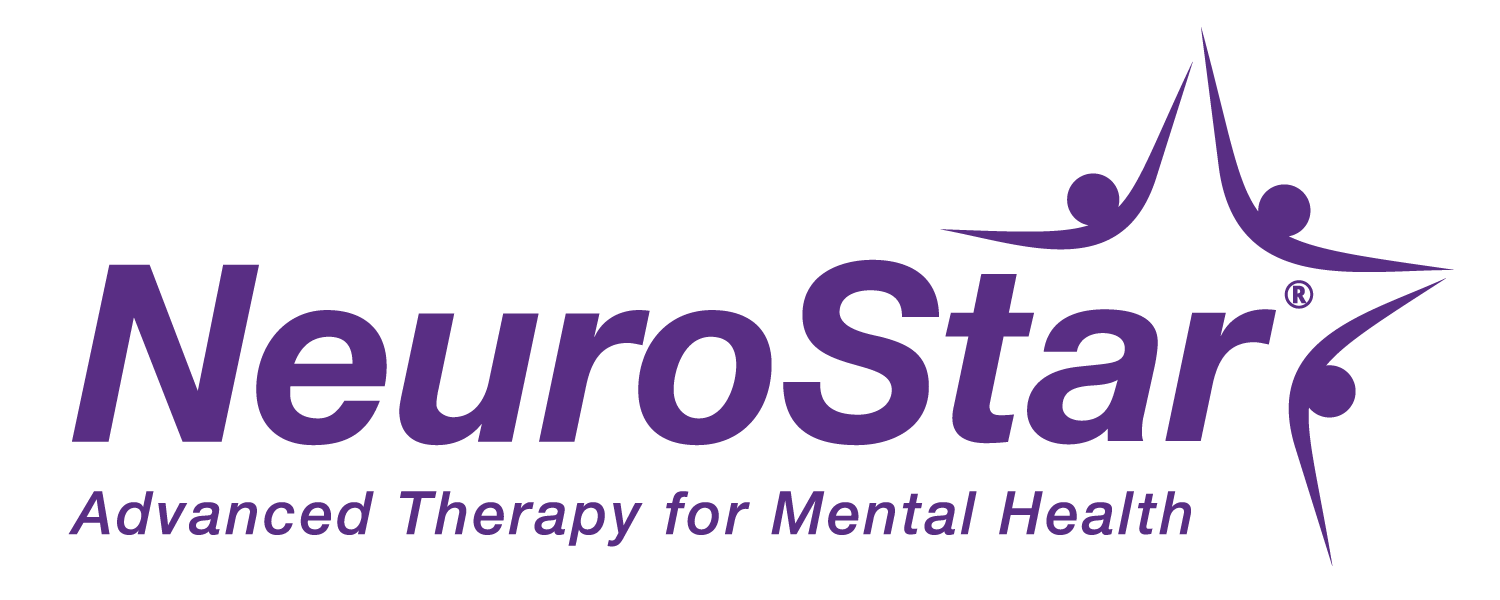Ketamine Infusion Treatment

Spravato Teatment

Am I a Good Candidate for Ketamine Infusion?
- Patients have to be diagnosed with treatment-resistant depression, anxiety, or PTSD.
- Under the care of a provider for psychiatric conditions – can be PCP or psychiatrist.
- No current substance abuse issues
- Be in good health – contraindications include uncontrolled hypertension, tachycardia, congestive heart failure, liver disease, seizure disorder, and intracranial masses.
- Highly suggested that the patient is currently working with a therapist as well.
Am I a Good Candidate for Spravato?
Being a suitable candidate for Spravato (Esketamine) treatment involves several considerations, including:
-
- Individuals should have a diagnosis of treatment-resistant depression, which means they have not responded adequately to at least two different antidepressant medications.
- Candidates require a comprehensive evaluation and screening by a mental health professional to assess their overall mental health and medical history before being cleared for Spravato treatment.
- Candidates should be committed to participating in a structured treatment program, which often includes regular sessions at a healthcare facility. Open communication with your healthcare provider is essential to determining if Spravato is an appropriate option and to creating a personalized treatment plan tailored to your specific needs.
What is Ketamine?
Ketamine can be used in the operating room and emergency rooms to help surgical patients feel more at ease. Ketamine has been shown to be a safe and effective anesthetic in low-income countries where there are few hospitals, disaster situations, or conflict zones. It can also provide relief for people who have undergone surgery when they’re struggling with pain and cannot undergo medications due to their condition/ illness. It has been used to anesthetize patients and manage pain. Over the years, ketamine has been identified as having good health effects on patients with OCD, PTSD, Postpartum Depression (PPD), Major Depressive Disorder (MDD), Treatment-Resistant Depression (TRD), and Suicidality.
What is Spravato?
The FDA has approved a new medication for the treatment of depression, Spravato (Esketamine), which is an isomer of the drug Ketamine. Spravato is administered as a nasal spray and is typically used in conjunction with an oral antidepressant. It works differently from traditional antidepressants by targeting the brain’s glutamate system, which is believed to play a role in mood regulation. Spravato was approved by the FDA to be covered by insurance for patients suffering from treatment-resistant depression (TRD) and the recently added condition of major depression disorder (MDD).
We here at Psychiatrist Wellness Center believe strongly in Spravato and the benefits our patients receive. If you have not seen improvements in your current and past medication, please reach out and speak with one of our knowledgeable team members to see if Spravato is right for you.
Start Your Path to Wellness Today!
What Conditions Does Ketamine Infusion Therapy Treat?
- Depression
- PTSD (Post Traumatic Stress Disorder)
- OCD (Obsessive Compulsive Disorder)
- Bipolar Disorder
- Anxiety Disorders
- Chronic Pain
What Conditions Does Spravato Treat?
- Treatment-Resistant Depression (TRD)
- Bipolar Depression
- Post-Traumatic Stress Disorder (PTSD)
- Obsessive-Compulsive Disorder (OCD)
- Major Depressive Disorder (MDD) with thoughts or actions of suicide
How Does Ketamine Infusion Treatment Work?
Ketamine works by repairing your brain on a cellular level. As ketamine navigates through the body, it causes new growth, rewires pathways, and restores connections, all while activating, balancing, and blocking key receptors. These effects specifically target areas of the brain that deal with mood and emotion. At the same time, ketamine blocks and “reboots” receptors throughout the body that are responsible for communicating pain signals. Our infusion treatment is designed to harness these unique properties of ketamine and, as a result, has become a highly effective treatment option for behavioral health and chronic pain conditions. Patients receive a much lower dose than those who use ketamine as an anesthetic, so they do not lose consciousness during treatment. The dose and rate of uptake are also much lower than those associated with ketamine abuse, which eliminates the risk of dissociation. The purpose is not to induce a high, but rather to deliver enough ketamine to the brain to create neurotransmitters and repair or rewire crucial pathways. Patients will undergo an initial round of infusions and have continued maintenance infusions as needed. The dosage and rate of the IV drip are determined by factors such as the patient’s weight and medical history, but it generally takes 50–60 minutes to receive the IV fluids and 30–60 minutes to recover. Protocols for treatment will vary and our medical team will determine the most effective course of treatment.
Are Ketamine Infusions Safe?
The efficacy of ketamine is certain. The question of safety depends, as always, on the patient’s clinical assessment. It won’t be right for every patient, even as it positively changes lives for other patients. So far, no adverse effects have been discovered. For low doses of ketamine, side effects tend to be minor. They may include disorientation, dizziness, feelings of detachment, nausea, fatigue, an increased heart rate, and heightened blood pressure. Our clinic is equipped to handle changes in patients’ vital signs and other side effects, should they occur.
When To Expect Results of Ketamine Treatment
Some patients experience relief within an hour of their first treatment. Most feel results within a day or so. The effect lasts for several days to a few weeks, giving patients and their care providers time to follow up on further treatment. The breakthroughs experienced during this period can continue to help the patient live a better life long after the ketamine leaves their system.
How often do I need Spravato?
Phase 1 (Induction): In weeks 1-4 patients are required to administer the medication within the approved medical facility and be monitored for a minimum of 2 hours twice a week.
Phase 2 (Maintenance): Weeks 5-8 patients come once weekly, and continued medical observation requirements remain.
Phase 3 (Ongoing Treatment): Patients follow up every 2 weeks for administration and require observation during the single treatment.
What are the side effects of Spravato?
During the Spravato treatment, we will maintain a relaxing environment while we monitor based on the requirements set before us. Commonly, patients may experience mild disassociation and elevated blood pressure. As a controlled substance, this medication does carry a risk of dependence. We encourage all patients who consider using Spravato to ensure they are under the observation of a specialist.
Additional side effects may include:
- Fatigue
- Dissociation (Feeling disconnected from your body)
- Increased blood pressure
- Difficulty concentrating and dizziness
- Inability to drive or operate machinery
- Suicidal thoughts for young adults
Fatigue


